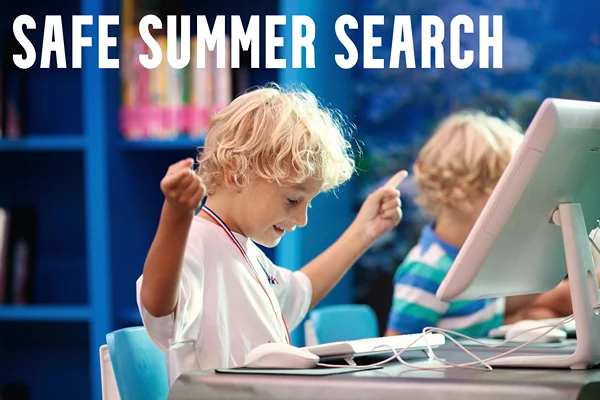A Guide to Autodidacticism: How to Become a Self-Learner
Do you sometimes feel stuck in a rut when it comes to your education? Are you not learning in the traditional school system as you expect to? If so, consider autodidacticism as an option. Autodidacticism is a self-directed approach to learning, and it is an effective way to get more out of your education.
In this guide, we’ll outline some tips for becoming a successful self-learner. So if you’re ready to take your study into your own hands, keep reading!
What Is an Autodidact?
An autodidact is someone who self-teaches a particular subject or skill instead of acquiring knowledge through formal instruction. Actually, many well-known historical figures were self-taught, including Leonardo da Vinci and Abraham Lincoln.
Nowadays, with the vast amount of online information and new emerging avenues in education, it has become more accessible for people to educate themselves on any topic they prefer. While formal education is still valuable, there is no longer a need to rely solely on institutions to learn. Anyone can be an autodidact.
Is this something you’re looking forward to?
If so, you’re at the right place! Let’s discover eight proven practical tips to help you get started.
1. Find Your Field of Interest
We all know how challenging choosing a field of study can be, especially with many available options. To narrow your choices, you must find what you are passionate about. What topics do you think about even when you’re not in class? What are the subjects that inspire you?
For example, consider studying environmental science if interested in ecological and sustainability issues. On the other hand, if you enjoy learning about social justice, consider studying sociology or criminology.
Choosing the field study that excites and inspires you will set you up for a lifetime of learning and discovery.
2. Develop Self-Discipline
Autodidactic learners are not born with extraordinary abilities but share one important trait: self-discipline. This quality allows them to teach themselves new skills and knowledge on time. With self-discipline, it is possible to maintain the focus and stimulation required to learn independently. So how can you develop this skill?
The first step is to set realistic goals. Learning an entire subject overnight is doomed to failure. Instead, break down your goals into manageable pieces and set a timeline for each goal.
As you work towards them, track your progress and document any challenges you encounter. You can also use tools to help you count your studying hours, such as time trackers, virtual notes, and task management apps.
Most importantly, remember to reward yourself for your accomplishments. A little positive reinforcement will keep you motivated and on track.
3. Focus On One Thing at a Time
In today’s fast-paced world, learning new things quickly and efficiently it’s more important than ever.
One of the key characteristics of an autodidact is fitting into the requirements of real-life challenges. In our era, people of all ages constantly seek to learn new things. According to a recent study, the average person will change their working careers 5-7 times during their life.
That’s where “just in time” learning comes in. This educational aspect is all about acquiring the skills you need when you need them. There’s no need to waste time learning something you may never use. Instead, focus on the things that will affect your life or career the most.
This form of learning can take many forms. For example, it might mean watching a tutorial on YouTube when you need to learn how to solve a problem—or reading an article when you want to learn more about a particular topic.
4. Match the Proper Learning Methods
There is more than just a one-size-fits-all approach to learning, especially in subjects like language learning. For example, some people understand best by listening to audio recordings, and others by speaking with a native speaker. The key is to find the right mix of methods that work for you.
If you’re a visual learner, you can start by watching a few episodes of your favorite TV show in the target language. Then, you can build up your viewing with related reading material, such as books.
Another effective way to practice what you’ve learned is conversing with friendly native speakers. This will help you quickly match your learning experience to your needs and goals.
5. Attend Seminars, Workshops, or Courses
One exciting and effective way to learn more about what you are passionate about is to attend beneficial activities related to it. This allows you to hear from experts in the field and learn about recent developments in the topic area. While there are courses like Coursera Plus, a paid subscription model, most of Coursera courses are entirely free to audit! Courses also include interactive exercises and real-world projects.
Attending events also helps you network with others who share your interests on a range of subjects, including business, computer science, and history. This can lead to new opportunities and collaborations and inspire fresh ideas for pursuing your passions.
6. Think Outside of the Box
As an autodidact, you have the advantage of tailoring your education to suit your own interests. However, only pursuing information reinforcing your beliefs can get you stuck in a rut. To truly be creative, you must seek diverse perspectives and open yourself up to new ideas.
Fortunately, there are many free resources to do that. For example, online forums and chat rooms offer a great way to connect with people worldwide and share international experiences.
7. Take Notes and Create Action Plans
As an autodidact, you can choose your own learning materials and pace of study. However, it’s easy to get overwhelmed or lost in all the information out there. That’s why taking valuable notes and creating action plans as you go is essential.
You’ll manage your time effectively and learn more adequately by tracking your progress and organizing ideas. Connecting with other autodidacts or in person is also helpful. There’s nothing like sharing ideas and motivating each other to keep learning!
8. Use Study Affirmations
As a self-learning student, a study affirmation is the easiest way to keep your motivation high. This includes a positive statement you repeat to yourself regularly. For example, you can say, “I will complete this today,” or “I am a successful student.”
Repeating these statements will make you believe them, keeping your productivity and commitment on track. The most important thing is to stay consistent in your use of affirmations. Say it to yourself daily, even write them down, and eventually, it will become part of your routine.
Tools for Autodidacts
There are many free tools available for self-taught learners. First and foremost, a good dictionary is always essential. Not only does it provides definitions for unfamiliar words, but it also helps with pronunciation and usage.
Another great resource includes self-education books. But, again, countless options exist on every imaginable topic, many of which can be found for free.
In addition, many universities offer free online courses that provide a structured introduction to various subjects.
Here are some of the free resources to help you on the self-education journey:
Wikibooks
Wikibooks is a Wikimedia Foundation project which serves as an online library of free online textbooks. This project started in 2003 and has grown to involve over 33,000 books. Wikibooks is one of the largest and most popular projects, with over 1.5 million monthly visitors.
While most books are in English, the project is also home to many works in other languages, including Spanish, French, and Chinese. As the world’s largest provider of free educational content, Wikibooks is a critical resource for students.
Bookboon
If you love reading, there’s a new website that you’ll want to check out. Bookboon is a free online library that offers thousands of ebooks for readers of all ages.
Many textbooks help students learn for free and can be easily downloaded as PDFs. Best of all, Bookboon is free to use – so why not start browsing today?
Khan Academy
You’ve probably heard of Khan Academy already. This non-profit organization offers students free online classes and resources. The Academy was founded in 2008 to provide “a free, world-class education for anyone worldwide” and now has over 20 million students using it.
You can find courses in various subjects, from science to history and art. Besides its online classes, Khan Academy provides practice exercises, video lessons, and articles.
YouTube
Recently, YouTube has become an increasingly popular resource for educational videos, along with the safe alternative KidzTube, which features screen educational YouTube videos.. So whether you’re looking for a tutorial on how to solve a math equation or want to learn a new language, you’ll find what you’re looking for on YouTube. Also, you can often access this information for free.
Bottom Line
Understanding how self-education works is one of the most significant experiences you can cultivate as an individual. It’s a skill that will always serve you well, regardless of your working industry. And luckily, it’s something anyone can develop with enough commitment and effort.
If you’re interested in becoming an autodidact, the above guide should give you a good starting point. So what are you waiting for? Start browsing and learn something new today!
Additional Resources:
- Explore how a lack of education, knowledge, and experience can mislead people because of the Dunning-Krugger Effect.
- Discover how to learn a new language faster.









